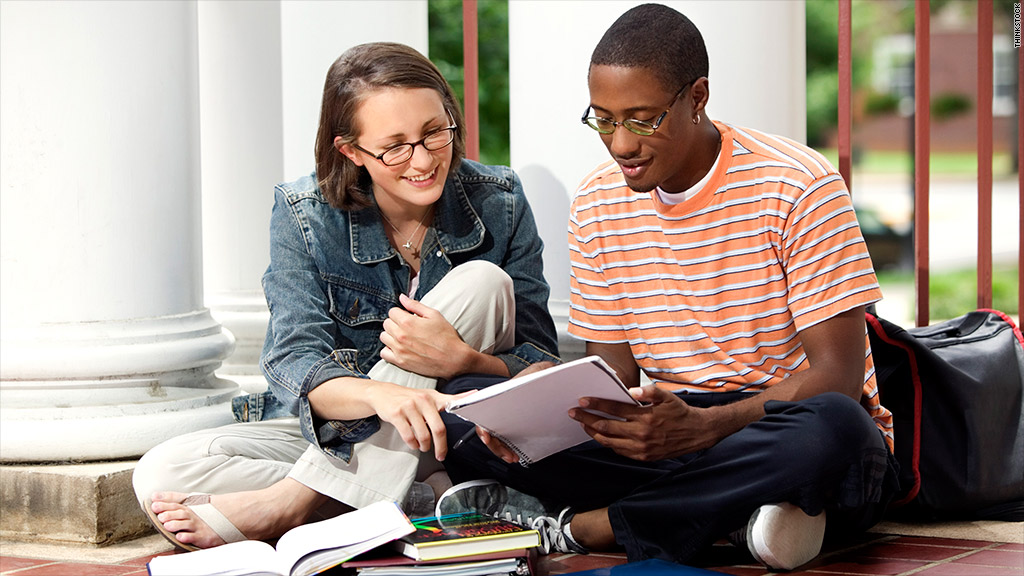
On July 1, the interest rates on student loans subsidized by Uncle Sam will most likely double to 6.8%.
Congress and the White House agree that something should be done to prevent that. They don't agree on what.
The Republican-controlled House passed a bill last week that would stop the rates -- lowered by Congress six years ago -- from doubling now, but would allow them to rise later. However, President Obama vowed to veto it, calling it the "wrong approach."
So the odds are about 7 million students taking out subsidized loans for the next school year will face bigger balances when they start paying off their loans after graduation.
"Nothing will happen. They won't agree," said Matthew Chingos, an education policy fellow at the Brookings Institution. "And the rate will sunset back to 6.8%."
Related: Class of 2013 grads average $35,200 in total debt

The rate hike will only affect a third of all undergraduate students who have subsidized loans, in which the federal government absorbs some of the interest rate. Those are awarded based on economic need.
Far more undergraduates take out unsubsidized loans, whose rates have been at 6.8% since 2007.
Because of the disparity, some Washington leaders are looking at starting over on student loans. The idea would be to make rates more contingent on economic conditions.
President Obama and House Republicans have proposed different ways of tying rates to 10-year Treasury notes, adding some extra cost to the borrower. That would allow student loan rates to fall when the economy tumbles and rise when it soars, said Jason Delisle, director of the Federal Education Budget Project at the New America Foundation.
"People who took out loans in 2007 were heavily subsidized (when interest rates were higher), but students today are receiving a much smaller subsidy," Delisle said. "Let's make the rate more sensitive to what's happening in the economy."
If only it were that easy.
Obama and Republicans disagree on how to cap student rates, to make sure students don't get hosed if interest rates skyrocket. They disagree about how much "little extra" students should pay to cover the cost of the program.
The president and House Republicans disagree on how to let students "lock in" their rates from year to year. And they also disagree on how to spend any extra revenue that they might make through student loans.
Furlough means I can't pay my student loan
Senate Democrats have an entirely different approach that would charge students only what it costs the federal government to make the loans, period. To pay for the program, Democrats say Congress could get rid of tax breaks for the oil and gas industry. House Republicans aren't so keen on that.
Even newcomer Sen. Elizabeth Warren has a proposal on student loans, although it hasn't made much headway. She would, for one year, shrink student loan interest rates to just 0.75%, the same as the the Fed's discount window to banks.
Student debt has become a pressing issue with many young people looking for jobs. It is second only to mortgages as the largest debt consumers carry. In 2011, students on average owed nearly $27,000 in loans.
Student groups are pushing for Congress to extend the low 3.4% rate on subsidized loans another year to give lawmakers more time to work a long-term fix.
"Really for us, it's all about the cost of the loan to the borrower," said Chris Lindstrom, director of the higher-education program for the U.S. Public Interest Research Group.
